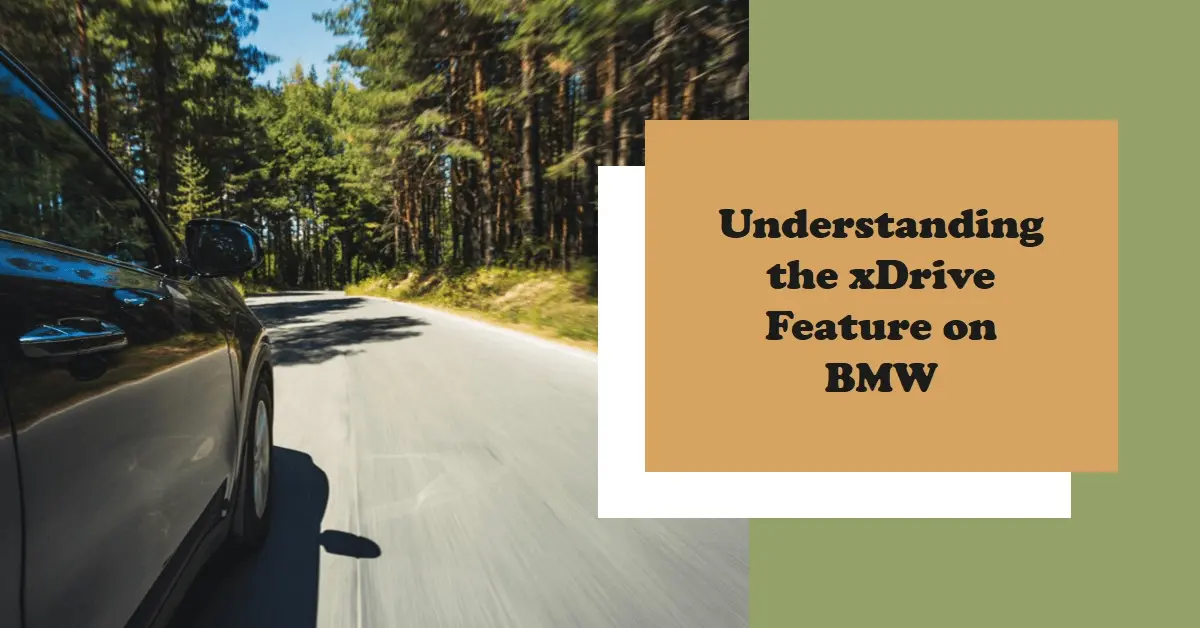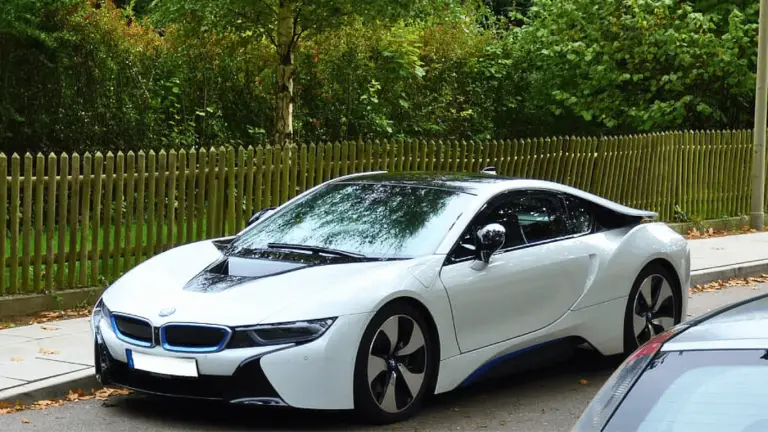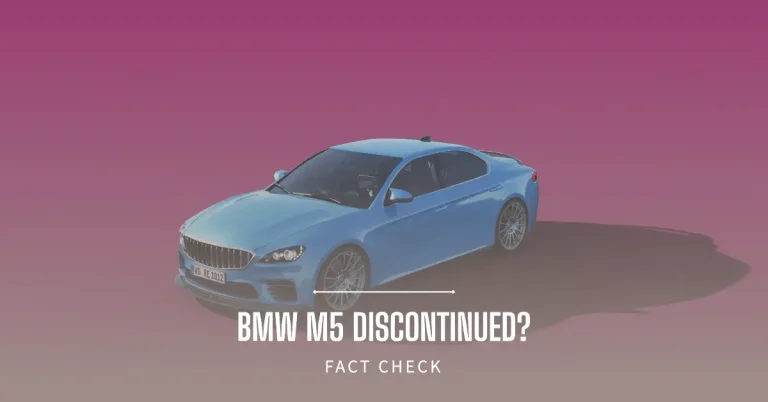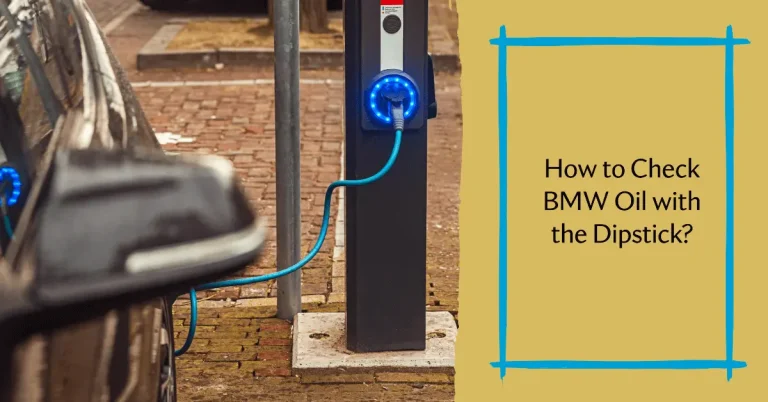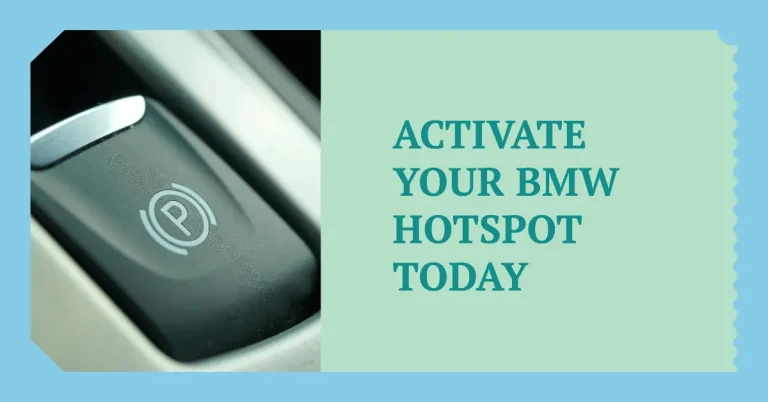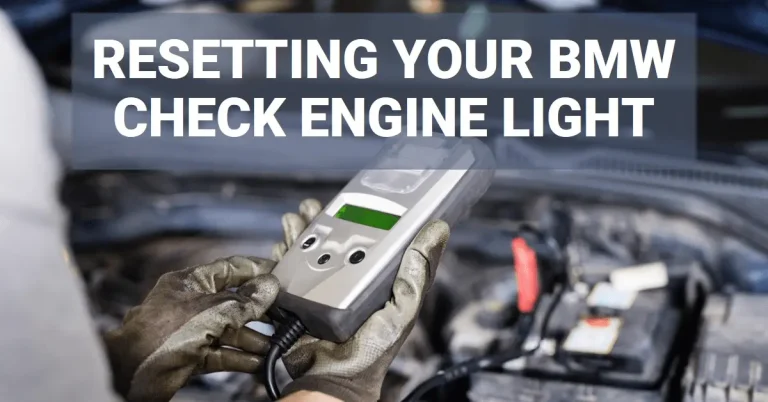What Does xDrive Mean on a BMW?
If you’ve shopped for a BMW lately, you may have come across the term “xDrive” and wondered – what does xDrive mean on a BMW? This technology has become more prominent from BMW over the past two decades across vehicle models ranging from the X3 SUV to the M5 sports sedan.
In this comprehensive guide, we’ll cover everything you need to know about BMW’s xDrive all-wheel drive system:
- What is xDrive and how does it work?
- Why did BMW create an advanced all-wheel drive technology?
- How is xDrive beneficial over rear-wheel drive?
- Which BMW models offer xDrive capabilities?
- Is there any downside to having xDrive on a BMW?
- How BMW’s system stacks up to similar offerings from Mercedes and Audi
- Is xDrive something you need on your next BMW purchase?
By the end of this post outlining the xDrive meaning, technology and applications, you’ll understand exactly what sets this all-wheel drive platform apart on BMWs and whether it should factor into your next new or used car purchase decision.
History of BMW xDrive Technology
To understand the full xDrive meaning, we have to go back to when and why BMW first developed this all-wheel drive (AWD) platform.
When Was xDrive Introduced?
While BMW offered its first all-wheel drive model – the 325iX – way back in 1985, the first use of the xDrive branding appeared when BMW launched its X3 SUV in 2003. This nomenclature better aligned with BMW’s growing lineup of X Series SUV models.
Over the next two decades, BMW rolled out xDrive across more model lines as consumer appetite grew for all-wheel drive options. This expanded to include the X5, X6, X7 SUVs, the 3, 4, 5, 6, 7 and 8 Series sedans and coupes, plus performance models like the M3, M5 and M8 from the company’s M division.
Why Did BMW Create Its Own AWD System?
BMW has traditionally focused on the rear-wheel drive format to deliver the sporty and dynamic driving experience the brand has become famous for. So why add all-wheel drive into the mix?
There were a few compelling reasons that drove BMW’s investment in advanced xDrive technology:
- Respond to Market Demands: As other luxury brands like Mercedes-Benz and Audi offered AWD capability more widely on vehicles – including performance sedans and coupes in addition to SUVs – BMW needed an answer to compete for those buyers and enable similar new vehicle capabilities.
- Enhance Traction & Stability: All-wheel drive offered inherent advantages over rear-wheel drive in terms of getting power to the pavement efficiently. This was true across wet, snowy, icy or off-road conditions. BMW wanted to retain their driving dynamics but with enhanced traction and active safety.
- Support Higher Power Outputs: With vehicle performance and engine power outputs continuing to rise, BMW needed a way to effectively transfer that power to accelerate and handle precisely without sacrificing control. Again AWD offered clear advantages, especially when mated with advanced traction and stability controls.
With these motivations in mind, BMW engineered an electronically controlled multi-plate clutch xDrive system that could actively adapt to driving conditions in real-time – balancing traction needs with BMW’s signature driving feel.
How xDrive Works
Understanding what BMW set out to achieve with the xDrive platform is important. But to fully appreciate the xDrive BMW meaning, you need to know how this all-wheel drive technology actually works once integrated into BMW sedans, coupes, SUVs and sports cars.
Power Distribution Between Axles
The BMW xDrive system has the capability of sending power to all four wheels in variable distributions depending on conditions. This is actively controlled using a multi-plate clutch center differential instead of the traditional transfer case setup used on some other all-wheel drive vehicles.
- In normal or dry conditions, the xDrive AWD system defaults to a 40:60 front to rear torque split for a slight rear-wheel drive bias that aligns with BMW driving character.
- As conditions warrant – whether slippery surfaces, fast corner entry/exit, acceleration/braking demands – xDrive can dynamically shift all power to the front or rear axle as needed. Even sending 100% of available engine torque to a single axle is possible in extreme scenarios.
- This variable distribution combined with continuous monitoring from the stability control allows xDrive BMWs to optimize available grip and retain a more rear-drive oriented feel during normal motoring for that BMW feel enthusiasts appreciate.
Detecting and Adjusting to Slippage
Critical to the effectiveness of BMW’s xDrive system is its ability to detect wheel slip and make adjustments in a fraction of a second. As an example:
- Integrated sensors monitor each wheel’s rotation relative to the vehicle – allowing immediate identification of slippage at one or more corners.
- Before wheel spin impacts stability or slows acceleration, power can be shifted to the opposite axle or wheels with grip.
- Engine torque and braking pressure may also be adjusted automatically to regain traction.
- In wet weather for instance, the system limits torque sent to slipping wheels to retain control in corners or Hazards.
This proactive slip prevention functionality is central to xDrive’s traction and safety capabilities in all seasons and road environments.
Integration with Vehicle Stability Control
On BMW models, xDrive is deeply integrated with the Dynamic Stability Control (DSC) system which monitors various sensors like wheel speed, throttle/brake input, G-forces and steering angle. DSC uses this data to assess traction levels and vehicle rotation (understeer/oversteer) on a real-time basis.
DSC activatesABS braking or reduces engine power if needed to correct over/understeer and avoid spinning or loss of control. This allows confident acceleration and tighter cornering without compromising active safety.
Benefits of xDrive Over Rear-Wheel Drive
Given BMW’s heritage with exceptional rear-wheel drive vehicles, what are the tangible advantages of specifying xDrive on your BMW? Understanding the pros and cons can help determine if this feature is worth the extra cost on your next BMW purchase.
Improved Traction and Acceleration
In non-ideal road conditions like rain, snow or gravel, the ability to send power to all four corners prevents wasting energy spinning wheels without grip. Accelerating through a turn or merging onto a highway also benefits from optimized traction out of the hole. XDrive models consistently record faster 0-60 mph acceleration times than their rear-drive counterparts as a result.
More Stability Through Corners
While experienced drivers can control oversteer skillfully in dry conditions, most motorists benefit from the confidence and composure xDrive lends when roads are compromised. Applying power through corners or on cambered roads induces understeer on front-wheel drive cars but potential oversteer on rear-drive models. XDrive eliminates this while aiding turn-in and stable mid-corner acceleration for enthusiasts and daily commuters alike.
Safely Putting Power Down
Modern BMWs – especially the high performance M cars – generate significant power and torque (over 600hp in some cases). Trying to harness this solely through the rear tires risks losing control or requires expert precision on anything less than perfect tarmac. Integrating xDrive allows most owners to safely access this performance more often without backing off. Advanced drivers can even disable xDrive in the M5 and M8 models when conditions allow unleashing the rear wheels.
For many BMW shoppers, enhanced traction, stability and control ticks boxes around practical performance and active safety that makes xDrive’s advantages compelling day-to-day.
xDrive Use Cases and Models
Given BMW’s broad model portfolio, having both rear-wheel drive and xDrive-equipped all-wheel drive options caters to diverse customer needs ranging from city commuters to track enthusiasts.
SUVs Designed for All-Terrain Capabilities
On BMW’s X Series SUV models – including the X1, X2, X3, X4, X5, X6 and X7 – the xDrive system plays a crucial role in on and off-road dynamics. In addition to multiplying on-road grip, xDrive enables confident driving over loose dirt, gravel, grass or snow where traction fluctuates substantially between wheels and axles. The X5 for instance can tow over 7,000 pounds when properly equipped – impossible without advanced AWD.
Sedans and Coupes Enhanced With AWD
Where purists may have scoffed at the concept of adding xDrive to BMW’s luxury sedans and sport coupes historically, consumer response has proven this combination’s appeal. Models like the 3 and 5 Series Sedans plus 2, 4 and 8 Series Coupes offer xDrive to expand usability in all regions and weather while retaining legendary BMW driving engagement. Even the latest M3 and M4 open high performance to more drivers via AWD without sacrificing track prowess.
Available Across Lineup From X1 to M5
Rather than restrict xDrive to select models, BMW has made all-wheel drive available widely (standard in some cases) with over 75% of new vehicles now offered with xDrive across the full model lineup. Whether you’re eying a compact X1 crossover, versatile 3 Series wagon, iconic M5 sedan or the ultra luxury 7 Series, an xDrive variant exists to align with your priorities. BMW recognizes different customers have distinct needs and gives you the choice on most models to select based AWD preference.
Downsides of xDrive to Consider
While the sheer breadth of BMW xDrive applications highlights why this technology appeals to so many drivers, there are some compromises or downsides to weigh with xDrive models depending on your priorities.
Added Weight Reduces Efficiency
Incorporating a multi-plate clutch center differential, rear transfer case and additional driveshaft/axle components adds weight versus a comparable rear-wheel drive BMW model. In some vehicles, xDrive adds 150+ pounds over the rear-drive variant. More mass to accelerate and haul around impacts fuel efficiency and mileage. Many AWD BMW models sacrifice 5-8% EPA rated fuel economy over their RWD counterparts as a consequence.
Potentially Less “Fun” Than RWD Car
This one is subjective but speaks to the inherent handling balance and momentum control purists love from rear-wheel drive BMWs at their best. Adding all-weather grip and progressiveness also limits oversteer and the tail happiness experienced drivers seek when accelerating out of corners. While acceleration times improve with xDrive, outright lap times can suffer without masterful tuning. Of course most daily commuters will happily accept this compromise!
Advantage or Disadvantage Depending On Your Needs
Determining if xDrive suits your needs depends heavily on driving conditions and performance priorities. For buyers wanting enhanced stability commute in rain or snow, xDrive delivers confidence and reduced anxiety. Where ultimate dry road agility or track prowess are paramount, sticking with rear-drive could prove advantageous in skilled hands. There’s no definitively “correct” choice – alignment to your budget and realistic needs should guide AWD decisions.
Weighing how xDrive influences efficiency fuel costs, purchase price, weight and drivability help determine if BMW’s sophisticated AWD platform aligns with your intended car usage.
How xDrive Stacks Up to Other AWD Systems
Given frequent new and used car buyers cross-shopping BMW with competitive luxury brands, comparing how xDrive functionality and performance fares against rival all-wheel drive tech helps set expectations.
The two other German systems typically eyed are:
- Mercedes-Benz 4Matic AWD – introduced in 1997 this system has evolved technically but trails xDrive in torque distribution flexibility and cornering performance due to reliance on open front/rear differentials. 4Matic adds more weight than xDrive as well.
- Audi Quattro AWD – the 15 year headstart from Audi’s Quattro 1980 launch provided all-weather expertise but the center Torsen differential lacks electronically controlled precision and rear-biased handling potential xDrive enables. Quattro does offer legitimate off-road durability however in the Audi SUV lineup.
While Mercedes and Audi systems deliver confidence for most owners in winter climates, BMW’s spending on xDrive has yielded demonstrable performance advantages both objectively and subjectively according to many comparison tests. Only Porsche and Lamborghini compete with xDrive for technical sophistication today from an engineering perspective. And BMW offers AWD performance luxury vehicles at more affordable price points than those coveted brands.
Do You Need xDrive?
Given the investment required and fuel efficiency compromises, is BMW xDrive a technology you truly require in your next vehicle? Honestly assessing your climate, commute, priority on safety versus dynamics and other needs helps determine if xDrive should factor into your purchase decision when considering new and used BMW models across the lineup.
Here are two scenarios illustrating when xDrive proves extremely beneficial versus when you may be fine opting for a rear-wheel drive model:
- For drivers in the Snow Belt states encountering winter weather frequently, xDrive capabilities add confidence, stability and avoidance of getting stranded unable to move. The added cost gets justified easily if it gives you peace of mind commuting daily across ice and snow. Even a few scary situations avoided per year makes AWD invaluable proposition living with real winter.
- Where year-round driving dynamics hold priority – especially with performance models – and winter traction aids like snow tires suffice during short slippery spells, the lighter weight purer rear-drive setup makes sense. Unless you commonly encounter inclement conditions, a skilled driver will reap more enjoyment from the increased agility and balanced feel of a rear-wheel drive BMW.
Assessing your specific conditions and performance priorities determines whether xDrive should rank as a “must have” or “nice to have” feature when researching BMW options and packages. Test drive both versions on your shortlist to feel the difference as well.
The Future of xDrive Technology
Given the ongoing popularity of AWD for practical reasons and performance enhancement, BMW will undoubtedly continue investing in xDrive advancements going forward.
We’ll likely see expanded use of hybrid/electric drivetrains depending on motor placement, torque vectoring at the rear axle on more models to sharpen turn-in, and potentially predictive functionality via navigation data that begins adapting xDrive settings for upcoming road conditions before reaching them.
BMW M engineers are also working hard to minimize the rear-biased responses that allow advanced drivers to disable xDrive yet retain flawless front/rear power transitions once enabled again. Enabling drift modes with xDrive active also moves closer to reality.
Conclusion: Who Is xDrive Right For?
In summary when weighing what does xDrive mean in relation to BMW models available today, this all-wheel drive technology delivers tangible advantages to a wide range of drivers needing more traction and composure than rear-wheel drive can offer alone.
Buyers wanting assurance when roads get slippery, confidence through corners in all seasons, or safely capturing today’s high horsepower outputs benefit greatly from specifying xDrive if it fits their budget.
While adding some weight and impacting fuel efficiency, for practical daily transportation needs, xDrive enhances capabilities enough to justify those compromises without destroying BMW’s celebrated driving dynamics. Only the most extreme enthusiasts pursuing track days and skidpad lap records could argue against it unequivocally.
Now you should fully grasp the xDrive BMW meaning – from how the AWD system works, to why BMW developed it and what models showcase its impressive technical abilities. Reference this guide when cross shopping BMW models and determining if checking the xDrive option box warrants the investment based on how and where you plan to drive.

